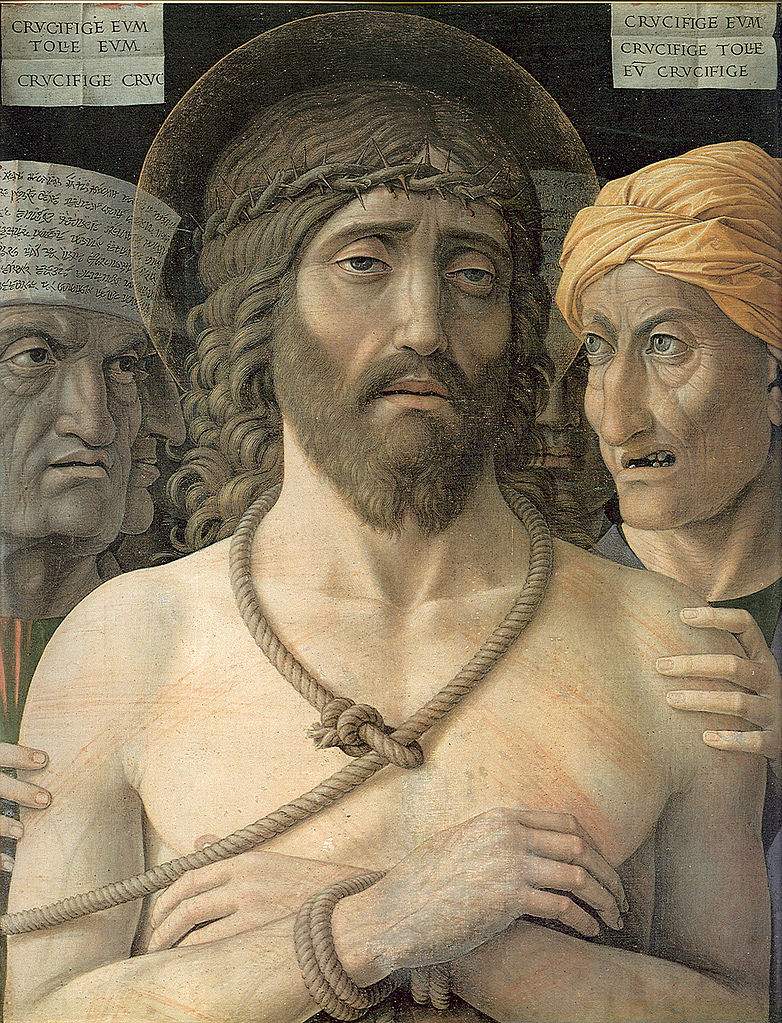The Galleria Nazionale d’Arte Antica at Palazzo Barberini is hosting, from September 27, 2018 to January 27, 2019, the exhibition La stanza di Mantegna. Masterpieces from the Jacquemart-André Museum in Paris, curated by Michele Di Monte, which brings to Rome six important works from the Jacquemart-André Museum in Paris, all of high quality and of great importance both from the point of view of art history and that of the history of collecting and taste. Among the works, two masterpieces by Andrea Mantegna (Isola di Carturo, 1431 - Mantua, 1506) also arrive in Rome.
This is an exhibition that has a certain connection with the territory since the artist stayed in Rome from 1488 to 1490, invited by Pope Innocent VIII to decorate the chapel of the new Belvedere building. However, the paintings with the Stories of John the Baptist and theInfancy of Christ were lost during some 18th-century renovations. No autograph works by Mantegna are preserved in the city, so the exhibition also becomes a unique opportunity to admire some works by this extraordinary master, one of the most revolutionary geniuses in the history of art.
All the works on display at Palazzo Barberini were collected by the famous collector Edouard André (Paris, 1833 - 1894) and his wife Nélie Jacquemart (Paris, 1841 - 1912), who bequeathed their prestigious collection to the French state. The selection focuses on Andrea Mantegna’s masterpiece,Ecce Homo, a clear early 16th-century synthesis between the demands of devotional painting and a scientific construction of anatomical forms and space. Mantegna’s painting is also of additional, exceptional interest because of its state of preservation, which documents the painter’s original execution technique and the aesthetic-visual effects he pursued.
Next toEcce Homo will be exhibited another work attributed to Mantegna himself, the more youthful Madonna and Child between Saints Jerome and Ludovico of Toulouse, which testifies, with an earlier chronology (1455), to Mantegna’s interpretation of images of Mary, a subject widely treated in the Veneto area by the workshop of Giovanni Bellini, with whom Mantegna was in close contact.
These iconographic and aesthetic developments can be clearly grasped in the small panel painting, Madonna and Child, by Cima da Con egliano (Giovanni Battista Cima, Conegliano, 1459/1460 - 1517/1518), which takes up and reformulates that now authoritative and successful typological model. The rare portrait on parchment by Giorgio Schiavone (real name Juraj Ćulinović, Scardona, 1433/1436 - Šibenik, 1504), on the other hand, illustrates the interest in the simultaneously modern and classicizing genre of the celebratory portrait, declined in an engraved profile of ancient inspiration and rendered with a precious taste for the material that the artist had matured in the workshop of the Paduan master Francesco Squarcione. The cult of the forms of ancient art is equally evident in both the drawing of the Mantegna school, Hercules and Antheus, and the sought-after bronze by Andrea Briosco, known as Riccio (Trent, c. 1470 - Padua, 1532), also active in the Paduan area, which depicts Moses with the elegance of pose and the solemn drapery of a small classical statue.
All these pieces hint at a phase in the history of European art collecting at the end of the 19th century, marked by a growing passion for the works of the Italian Renaissance and the masters of the Venetian and Tuscan schools, in an interweaving of social and economic interests, cognitive, critical and historical needs and new intellectual aspirations, which can find an eloquent parallel in the collection of works that German collector Enrichetta Hertz(Cologne 1846 - Rome 1913) donated to the National Gallery early last century.
For all information on times and ticket costs you can click the following link on the National Galleries of Ancient Art website.
Pictured: Andrea Mantegna, Ecce homo (1500; tempera and gold on canvas, 54 x 42 cm; Paris, Musée Jacquemart-André)
 |
| Two masterpieces by Mantegna arrive in Rome from Paris. Mantegna's room on display at Palazzo Barberini |
Warning: the translation into English of the original Italian article was created using automatic tools. We undertake to review all articles, but we do not guarantee the total absence of inaccuracies in the translation due to the program. You can find the original by clicking on the ITA button. If you find any mistake,please contact us.